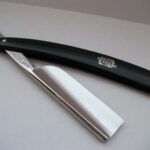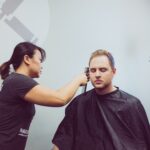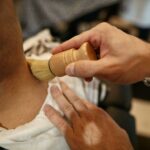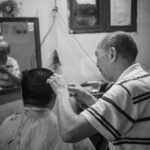Are you ready to embark on a journey through time, tracing the origins of the timeless craft of barbering? Prepare to be captivated as we delve into the fascinating history of this profession that has stood the test of time. From ancient civilizations to modern times, the art of barbering has evolved, adapted, and thrived. Join me as we unravel the threads of history and discover the significance of this age-old practice. Step into the world of barbers and let us explore the origins of barbering through the course of history.
Origins of Barbering
Have you ever wondered where the art of barbering originated? The practice of grooming and styling hair has deep historical roots and has evolved over time to become the profession we know today. From ancient civilizations to modern times, barbering has played a significant role in shaping cultural and societal norms. So, let’s take a journey through history and explore the fascinating origins of barbering.

Ancient Beginnings
To truly understand the origins of barbering, we must travel back in time to ancient civilizations. One of the earliest recorded instances of barbering can be traced back to ancient Egypt. In this ancient civilization, barbers not only trimmed and styled hair but were also revered as highly skilled individuals who performed various other tasks, such as dentistry and surgery. In fact, barbers were considered prestigious members of society and enjoyed a respected status.
“The art of barbering dates back to ancient Egypt, where barbers were highly esteemed for their skills in hair care as well as other specialized tasks.”
Roman Influence
As time went on, the practice of barbering spread to other parts of the world, influenced by the Roman Empire. Barbershops became popular social gathering places in ancient Rome, where people not only received grooming services but also engaged in lively conversations and social interactions. The profession of barbering flourished, and barbers were held in high regard for their expertise in hairstyling.
“The influence of the Roman Empire played a significant role in the spread of barbering, transforming it into a social institution where people gathered not only to groom but also to connect with others.”
Byzantine Era
During the Byzantine era, barbering took on a new dimension. Barbers became skilled in not only hairstyling but also facial grooming and treatments. They played an essential role in maintaining the appearance and hygiene of nobility and the upper class. This era witnessed the rise of intricate and elaborate hairstyles, with barbers showcasing their creativity and artistry.
“Barbering in the Byzantine era expanded beyond hairstyling to encompass facial grooming and treatments, with barbers becoming integral in the maintenance of the appearance and hygiene of the privileged.”
The Renaissance Influence
The Renaissance period marked a significant shift in barbering practices. This era saw advancements in art, science, and cultural exchange, which deeply impacted the profession. Barbers became skilled in the art of shaving, using sharp blades and various grooming tools. They also played a vital role in the medical field, performing bloodletting and other surgical procedures.
“During the Renaissance, barbers became masters of the art of shaving and acquired knowledge in medical practices, solidifying their position as skilled professionals in both grooming and healthcare.”
Modern Barbering
Fast forward to modern times, and barbering has evolved into a multi-faceted profession. Today, barbers are not only responsible for hairstyling, shaving, and grooming but also serve as therapists, confidants, and style advisors. Barbershops have also transformed into trendy hubs where people seek not just a haircut but an overall grooming experience.
“Modern barbers have embraced their role as more than just hairstylists, becoming personal advisors, therapists, and creators of an immersive grooming experience.”
From the ancient civilizations of Egypt and Rome to the influencial periods of the Byzantine Empire and the Renaissance, the origins of barbering have left an indelible mark on our society and culture. As we delve deeper into the history, we uncover not just a craft but a timeless profession that continues to thrive and evolve. So, next time you step into a barbershop, take a moment to appreciate the rich tapestry of history that underpins the art of barbering.
“The origins of barbering are intertwined with the development of human civilization, shaping not only our hairstyles but also our social interactions, artistry, and cultural perceptions.”
Barbering, an ancient profession with a rich history dating back centuries, has always held a certain allure. But have you ever wondered, when was barbering invented? The answer may surprise you! Dive into the fascinating origins of this timeless craft by clicking here: When Was Barbering Invented. Uncover the secrets and tales behind the evolution of barbering, from its humble beginnings to the modern, cutting-edge techniques we see today. Prepare to be amazed as you embark on a journey through time, exploring the roots of a profession that has stood the test of time. So, let’s unravel the mysteries together – click now and indulge in the captivating world of barbering.
FAQ
Q: Why is barbering considered a timeless craft?
A: Barbering is considered a timeless craft because it has been practiced across different cultures and time periods, adapting and evolving to meet the grooming needs and styles of each era. From ancient civilizations to modern times, barbering has maintained its relevance and significance, making it a profession deeply rooted in history.
Q: What are the earliest records or references to barbering?
A: The earliest records or references to barbering can be found in ancient civilizations such as Egypt, Mesopotamia, and Rome. In ancient Egypt, barbers played a vital role in society, not only as groomers but also as healers and priests. Mesopotamian artifacts and texts also indicate the existence of barbers, who were responsible for haircuts, beard trims, and even scalp treatments. The Romans had designated areas for barbershops, known as “tonsoriums,” where they provided grooming services to both men and women.
Q: How were barbers perceived in medieval times?
A: In medieval times, barbers occupied a unique position in society. They were not only responsible for grooming but also performed various medical procedures such as bloodletting, tooth extractions, and minor surgeries. The barber’s pole, with its red and white stripes, symbolized these dual roles, representing the barbers’ association with both hair and medical practices. This historical connection between barbering and medicine still persists in the traditional barber pole symbol seen today.
Q: How did barbering evolve during the Renaissance?
A: The Renaissance period marked significant changes in barbering practices and techniques. This era saw the emergence of highly skilled barbers who catered to the aristocracy and nobility. Barberships became places of social interaction, where men gathered to discuss politics, art, and culture. The Renaissance also witnessed advancements in hairstyling and the introduction of innovative tools such as razors, combs, and scissors. These developments transformed barbering into an art form, shaping trends that are still influential today.
Q: How has the profession of barbering evolved in modern times?
A: In modern times, the profession of barbering has continued to evolve, adapting to changing trends and societal demands. With the rise of salons and unisex hairstyling, barbershops became more gender-inclusive and started offering a broader range of services. However, traditional barbershops have managed to retain their charm and popularity by emphasizing the classic barbering experience. Today, barbers are respected professionals who combine skill, creativity, and a deep understanding of grooming techniques to provide clients with personalized and stylish haircuts and beard grooming.
- Unlock Water’s Symbolism: A Cross-Cultural Exploration - April 20, 2025
- Identify Black and White Snakes: Venomous or Harmless? - April 20, 2025
- Unlocking Potential: Origins High School’s NYC Story - April 20, 2025















